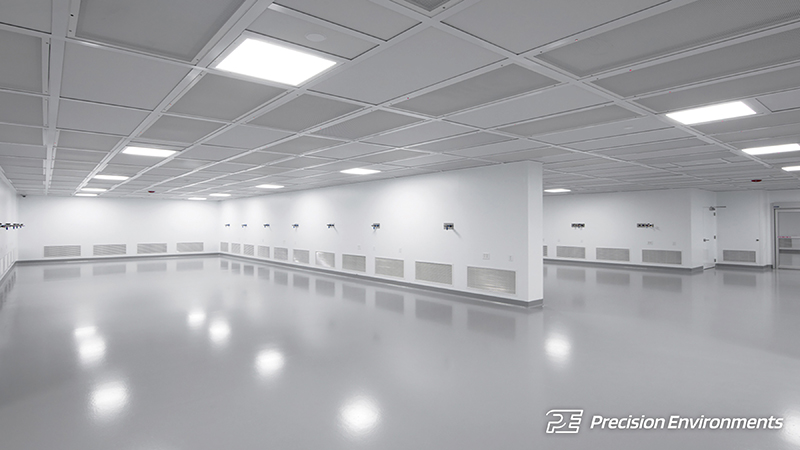A Guide to Cleanroom Wall Systems
Designing and building an efficient and hygienic cleanroom environment requires careful consideration of the cleanroom wall systems you use. Cleanroom wall panels provide the framework for your controlled environment, ensuring it meets strict standards of cleanliness and functionality. There are a range of wall panel systems tailored to different cleanroom requirements. Let’s explore the options available and the advantages they offer.
Types of Modular Cleanroom Wall Panels
Insulated Metal Panels are a common choice for cleanroom environments due to their excellent thermal insulation properties and robust durability. These panels consist of an insulating core sandwiched between metal facings. They provide strong, sturdy walls that can be used to create cleanroom partitions, external walls, and even ceilings. Insulated metal panels offer a high degree of temperature control, making them ideal for environments with specific temperature and humidity requirements.
Honeycomb Panels are known for their lightweight yet sturdy construction. These panels consist of a core made of honeycomb-structured material, typically aluminum, sandwiched between two outer skins of metal. Honeycomb panels offer excellent strength-to-weight ratio, which is crucial for cleanrooms where load-bearing capacity may be limited.
Liner Panels provide a cost-effective solution for updating existing walls. These panels are typically ½ inch thick and consist of steel or aluminum skins bonded to an aluminum honeycomb core. Liner panels are attached to existing facility walls, allowing them to achieve the same finish and appearance as newly constructed walls.
Softwall and Rigid Wall Cleanroom Structures
Softwall cleanrooms are typically constructed using vinyl curtains and are available in antistatic variants when necessary. They are a good option for areas that just need a limited level of containment.
Rigid wall cleanrooms offer several panel types, including acrylic, static dissipative PVC, and polycarbonate. These panels vary in features, such as scratch resistance, impact resistance, and static dissipation, catering to different cleanroom requirements.
Drywall Coated with Epoxy Paint or Cladding
Another option for cleanroom walls, particularly in less strict areas, is drywall coated with epoxy paint. This option can be a more budget-friendly alternative, offering some level of protection and cleanliness. Epoxy paint is known for its resistance to moisture and ability to create a smooth, easily cleanable surface. It’s suitable for environments where the cleanliness requirements are not as demanding as other cleanroom settings.
Another option for drywall is covering it with hygienic cladding, which can be sealed using either silicone caulking or a heat seal with a welding rod. There are various types of wall cladding available, allowing you to choose the best fit for different applications.
How Cleanroom Panels are Sealed
The panel seams are commonly sealed either with a silicone caulking or a chemical cold weld.
Chemical cold welding offers a smooth, seamless surface across the entire panel system due to the welded seams. This seamless construction ensures the cleanroom maintains a high level of cleanliness and is ideal for environments with strict cleanliness requirements. Once installed, these panels form a fixed, integrated wall system that provides excellent strength and stability.
Silicone caulking provides a seal at a lower cost and still allows for ease of installation and removal. This design allows for the easy disengagement and replacement of individual panels as needed. This flexibility makes silicone caulking a great choice for environments where access to utilities behind the walls or adaptability to future changes is necessary.
By selecting the right type of wall panel system, you can ensure your cleanroom meets environmental expectations and is compliant with industry standards.
Jeff Meek
Regional Sales Manager
Recent Posts
Precision Environments, Inc.
Corporate Headquarters
4440 Lake Forest Drive Suite 120
Cincinnati, OH 45242
Phone: 513-847-1510








